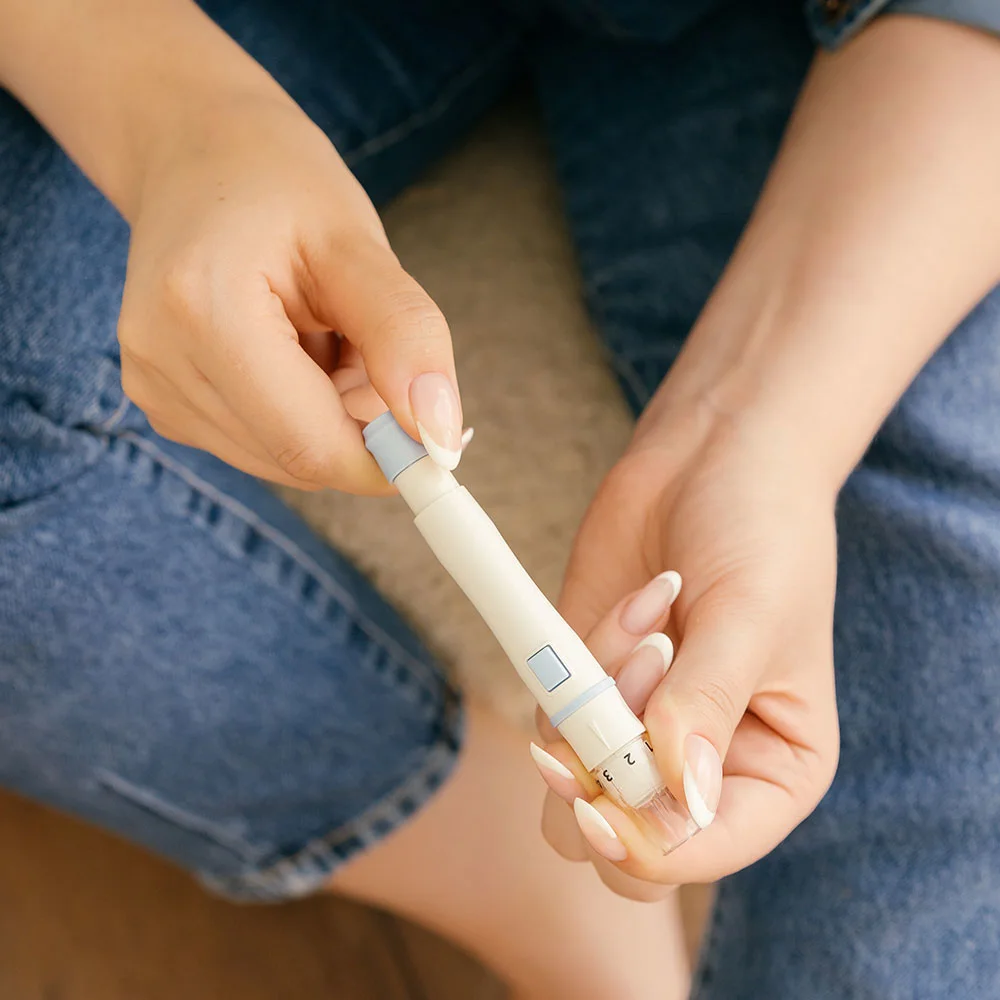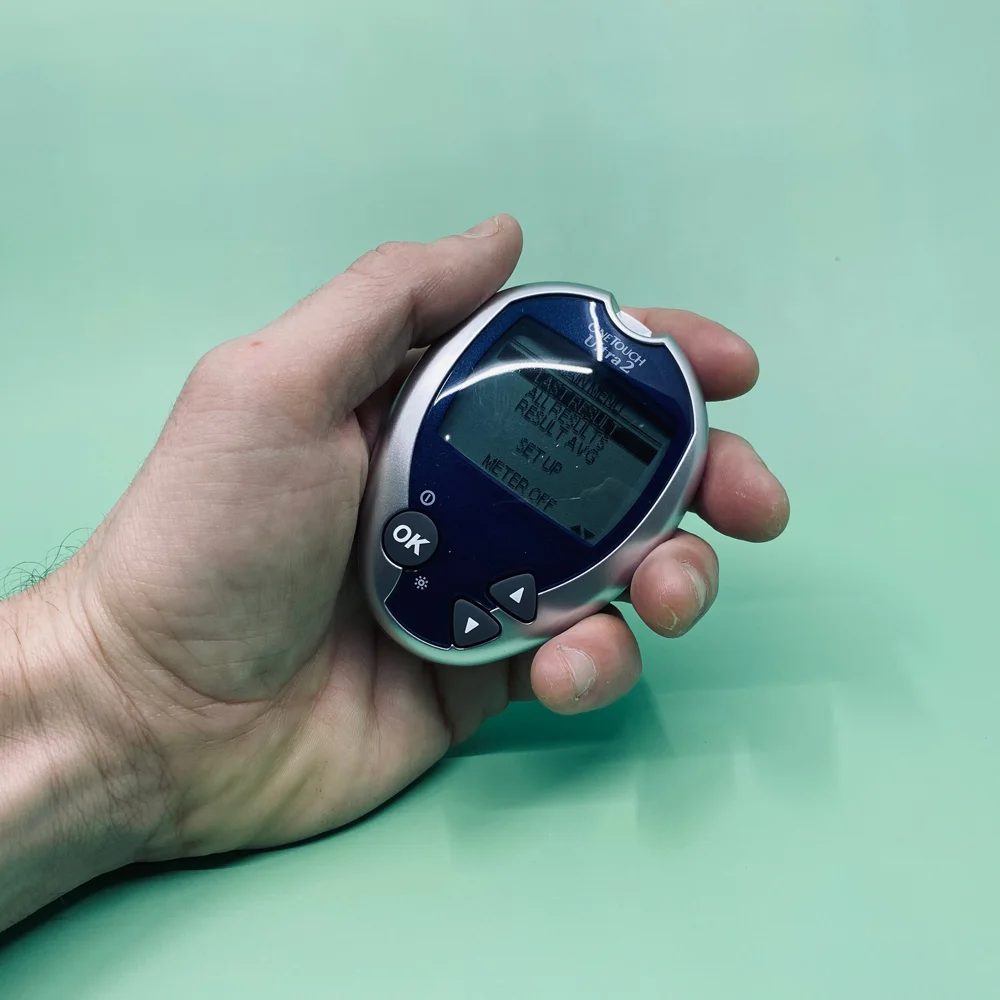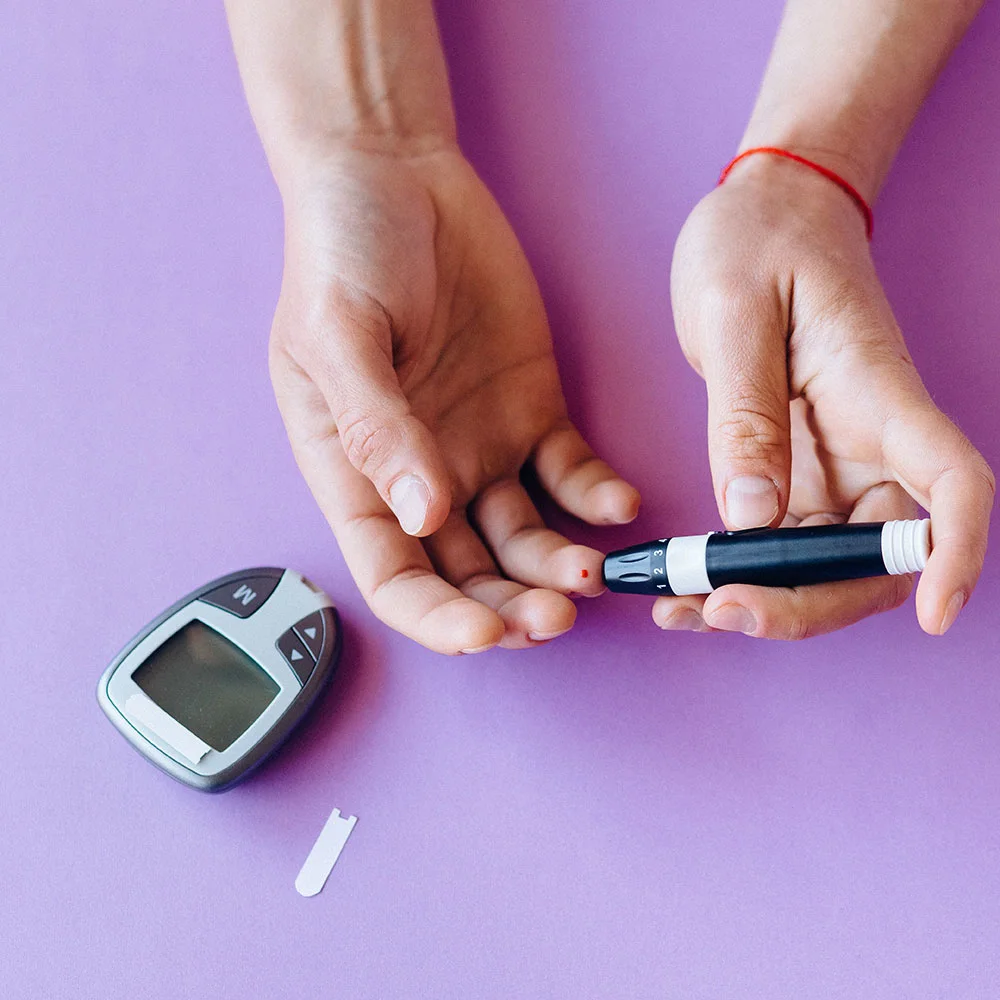Here's what we'll cover
Here's what we'll cover
Here's what we'll cover
The term “hyperinsulinemia” refers to a state when there is too much insulin flowing around in the blood. The word is quite a mouthful, so let’s break it down: “hyper-” means that there is an excess of something, “-insulin-” is a hormone that is produced in the body, and “-emia” refers to something that is in the blood.
Insulin is one of the hormones in the body that helps regulate blood sugar, or blood glucose. When glucose levels are high, insulin is secreted by the pancreas, an organ that sits behind the stomach. Insulin helps glucose move into cells to be used for energy or to be stored for a later time, lowering blood sugar in the process.
A question that often comes up around hyperinsulinemia is: “Is hyperinsulinemia the same as diabetes?” The answer is no, though the two are often associated with one another. Hyperinsulinemia is not a primary medical condition; rather, it is a sign or symptom of some other underlying cause. Management of hyperinsulinemia, therefore, is directed towards treating the primary cause rather than directly addressing the excess insulin.
What are the causes of hyperinsulinemia?
Insulin resistance
Hyperinsulinemia is most commonly caused by a condition called insulin resistance. Somebody is insulin-resistant when insulin sensitivity decreases, meaning the tissues of the body become less sensitive to insulin. This means that glucose doesn’t enter muscle, fat, or liver as well as it should and starts building up in the blood (hyperglycemia).
In response to this resistance, the pancreas secretes higher levels of insulin into the blood. This is hyperinsulinemia. Eventually, when the pancreas is no longer able to adequately compensate for insulin resistance, and blood sugar levels are uncontrolled, type 2 diabetes develops. But while insulin resistance leads to hyperinsulinemia and causes type 2 diabetes, hyperinsulinemia and type 2 diabetes are not the same thing as one another. In fact, later in the course of type 2 diabetes, the pancreas often gets damaged, and too little insulin is produced.
Weight gain and being inactive are two of the risk factors for developing insulin resistance, and insulin resistance is one component of metabolic syndrome, a group of conditions that increase your risk of heart disease.
Iatrogenic
This word is another mouthful and essentially means “caused by medical treatment.” Iatrogenic hyperinsulinemia refers to high levels of insulin in the blood that are the direct result of some kind of medical treatment.
All people with type 1 diabetes and some patients with type 2 diabetes give themselves insulin (through an injection or with an insulin pump) as part of their treatment for their condition. In some cases, hyperinsulinemia can be traced back to how a patient is receiving insulin. If the patient is giving themselves too much insulin - whether on purpose or inadvertently - this can cause blood levels that are too high, driving down blood sugar to dangerously low levels.
This is potentially very dangerous, and the patient’s insulin dose should be adjusted, or they should be counseled on proper ways to administer insulin.
Insulinoma
Insulinomas are very rare tumors (only 4 cases per 1,000,000 people each year) that secrete insulin (UpToDate, 2019a). The tumors are a type of neuroendocrine tumor, meaning that they are made up of cells that respond to the body’s nervous system, and they release hormones into the bloodstream.
Insulinomas are made up of the insulin-producing cells in the pancreas. They are most often benign, they cause episodes of low blood sugar (a result of the high levels of insulin), and they can be removed surgically. The causes of insulinomas are unknown, but certain genetic disorders can increase your risk of developing one.
Nesidioblastosis
Nesidioblastosis is a term that has fallen in and out of favor but generally refers to a condition where there is a higher number of insulin-producing cells in the pancreas than normal. This is distinct from an insulinoma because there is no actual tumor growth. Instead, there is an abundance of cells that are secreting insulin into the blood, leading to higher levels. There have been reports of adults developing nesidioblastosis after undergoing Roux-en-Y gastric bypass surgery (a type of weight loss surgery) (UpToDate, 2019b).
Congenital hyperinsulinism
The term “congenital” refers to conditions that exist since birth. Congenital hyperinsulinism, then, refers to high levels of insulin in the blood that are related to some kind of issue that is present when you are born. Congenital hyperinsulinism can be one cause of hypoglycemia (low blood glucose) episodes in infants and children and affects between 1 in 2,500 to 1 in 50,000 newborns. The condition is caused by genetic mutations that lead to increased secretion of insulin from the pancreas. So far, at least nine gene mutations have been identified that cause congenital hyperinsulinism.
Is there any way to prevent hyperinsulinemia?
Prevention of hyperinsulinemia is only possible when the cause is due to insulin resistance or due to the administration of medicine. For patients who have insulin resistance, weight loss, diet, and exercise are the best ways to reverse resistance and improve hyperinsulinemia. It’s generally recommended that people engage in at least thirty minutes of moderate exercise at least five times a week to remain healthy. For people who give themselves insulin or use an insulin pump as medication, being aware of your proper dose and schedule is the best way to avoid iatrogenic hyperinsulinemia. If you are experiencing frequent episodes of low blood sugar, you should talk to your healthcare provider about adjusting your dose.
What are the symptoms of hyperinsulinemia?
The most common symptom of hyperinsulinemia is having episodes of hypoglycemia. This means periods when your blood sugar gets too low (below 70 mg/dL). This is called hyperinsulinemic hypoglycemia. These episodes are a direct result of the excess insulin pushing glucose into fat, muscle, and liver cells for use and storage. Symptoms are more likely when hyperinsulinemia is caused by an insulinoma and less likely when is it caused by insulin resistance.
The symptoms of hypoglycemia include anxiety, dizziness, fatigue, headache, irregular heartbeat, shakiness, and sweating. However, hypoglycemia can be very dangerous and may progress to changes in vision, confusion, seizures, loss of consciousness, and death. It is important to recognize hypoglycemia as quickly as possible and to act on it.
How is hyperinsulinemia diagnosed?
Healthcare providers generally do not screen for hyperinsulinemia. However, if your medical history and symptoms seem consistent with a diagnosis of hyperinsulinemia, your healthcare provider may perform a blood test to check your insulin levels after you have been fasting.
What is the treatment for hyperinsulinemia?
Treatment of hyperinsulinemia is geared towards addressing the underlying cause.
If insulin resistance is causing hyperinsulinemia, weight loss, diet, and exercise are the best ways to improve both conditions. If your insulin resistance has progressed to prediabetes or type 2 diabetes, and you have been prescribed medication from your healthcare provider, staying compliant with your medication can help improve your hyperinsulinemia.
Metformin, which can be prescribed for both prediabetes and type 2 diabetes, is one type of medication that improves the way your body responds to insulin, potentially reducing the need for your pancreas to compensate for insulin resistance.
If your hyperinsulinemia is caused by an insulinoma, surgical resection (removal) of the tumor can lead to definitive treatment. Although rare, some insulinomas can metastasize to other parts of the body. In these cases, more advanced interventions may be required.
If hyperinsulinemia is caused by nesidioblastosis, evidence has shown that surgical removal of a portion of the pancreas can be effective for treatment (Witteles, 2001). One risk of this procedure is the later development of insulin-dependent diabetes mellitus because the pancreas is no longer able to make as much insulin as the body needs.
DISCLAIMER
If you have any medical questions or concerns, please talk to your healthcare provider. The articles on Health Guide are underpinned by peer-reviewed research and information drawn from medical societies and governmental agencies. However, they are not a substitute for professional medical advice, diagnosis, or treatment.
References
UpToDate. (2019a). Insulinoma. Retrieved from https://www.uptodate. c om/contents/insulinoma?search=hyperinsulinemia&source=search_result&selectedTitle=3~114&usage_type=default&display_rank=3
UpToDate. (2019b). Noninsulinoma pancreatogenous hypoglycemia syndrome. Retrieved from https://www.uptodate.com/contents/noninsulinoma-pancreatogenous-hypoglycemia-syndrome
Witteles, R. M., Straus II, F. H., Sugg, S. L., Koka, M., R., Costa, E. A., & Kaplan, E. L. (2001). Adult-Onset Nesidioblastosis Causing Hypoglycemia. Archives of Surgery , 136 (6), 656. doi: 10.1001/archsurg.136.6.656. Retrieved from https://jamanetwork.com/journals/jamasurgery/fullarticle/391614












